For many classic clothing enthusiasts, the 1930s are the epitome of style, and the decade is considered to be the “Golden Age of Menswear.” But what did men really wear at this time that makes the clothing of that decade so iconic? Today, we’ll turn back the clock and analyze true 1930s men’s clothing.
Personally, I love flipping through vintage fashion illustrations from this era; the wide lapels of the suits and the full cut of the garments are just special. Because of that, we put together an e-Book with lots of vintage 1930s men’s fashion illustrations and we talk about how you can use the concepts back then and apply them to your outfits today.
Unsurprisingly, we call it Gentlemen of the Golden Age. At a glance, you’ll see how cool the guys look. The patterns, the cut, the color combinations they wear are all unique yet not over the top.
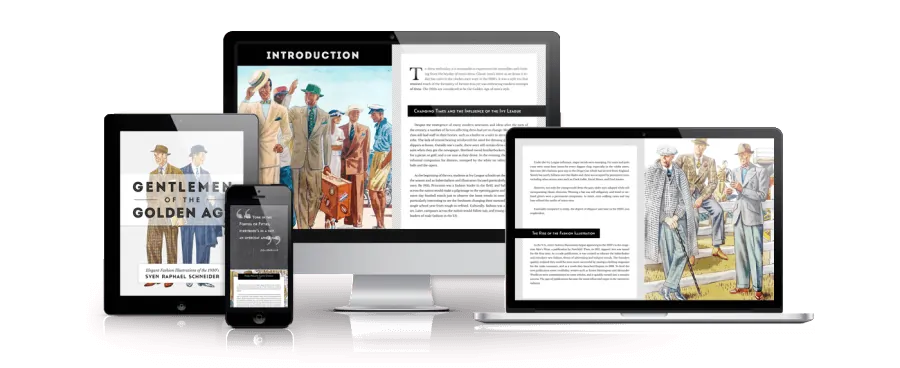
Fashion illustrations are one thing. Of course, that was an ideal. Oftentimes, the leg line was super long and the proportions were off to real men. It was just a stylized fashion ad. So, the big question is, what did men actually wear?
Events That Influenced 1930s Menswear
Leading up to this decade, life was getting better for a lot of men, especially Joe average. World War I was long over, there were new products on the market, working conditions had improved, and class relations had improved as well. The weekend had been invented and men could spend more time on themselves.
Then, suddenly the Wall Street Crash of 1929 happened and the world changed overnight, not just in the US, but across the globe. Hollywood stars of that era certainly didn’t look like they were going through the Great Depression but, of course, they were part of the top 1% and as such, could afford to dress well.
However, for the average person in the 30s, life looked a lot direr. Many lost it all, lived in poverty, and it definitely showed in their daily attire. Unlike in the previous two decades, the 1910s and 1920s, men now wore more casual outfits. That meant more sportswear, fewer stiff hats, and starched collars.
Compared to modern standards, the clothes looked still extremely stylish but they were less ornate and excessive and had become more practical. New trends were created by the prevalence of movie stars. If they wore something or did not wear something, that trend continued in the general population.
Overall, this era is probably where most of our suiting culture today comes from, and because of that, it is very interesting. Of course, many different countries wore different clothing in the 1930s, but we focus mainly on the US and Europe.
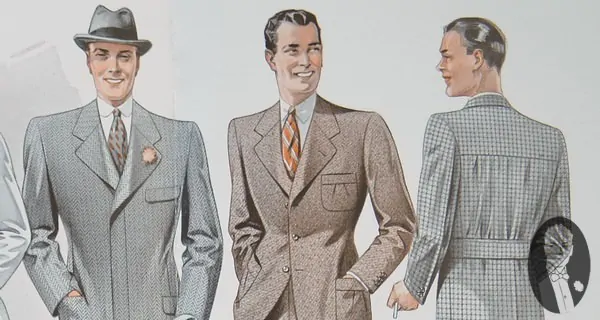
What Men Really Wore in the 1930s: Hats
If you’re a regular reader, you already know that men back then still wore hats, and that was the case in the 1930s. That being said, young men started maybe skipping the hat and it wasn’t that big of a taboo anymore.
Amongst working-class men, the flat cap was probably the most popular piece of headwear. The flat caps and hats in general also got bigger. You had the pancake style flat cap, as well as wide-brimmed Fedora hats.
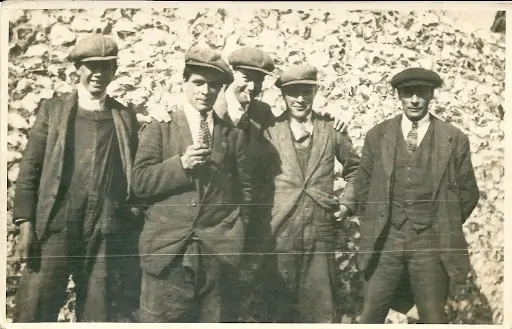
In England, upper-class and middle-class gents would still wear Bowler hats or Homburg hats but also Fedora hats. In the US on the other hand, the Fedora was the number one hat with the middle class. The felt was soft, you could add the pinch. You had a wide brim and a big headband and a high crown.
In the day, Fedora’s from the 1930s are highly sought after and you can fetch good prices in places like eBay.
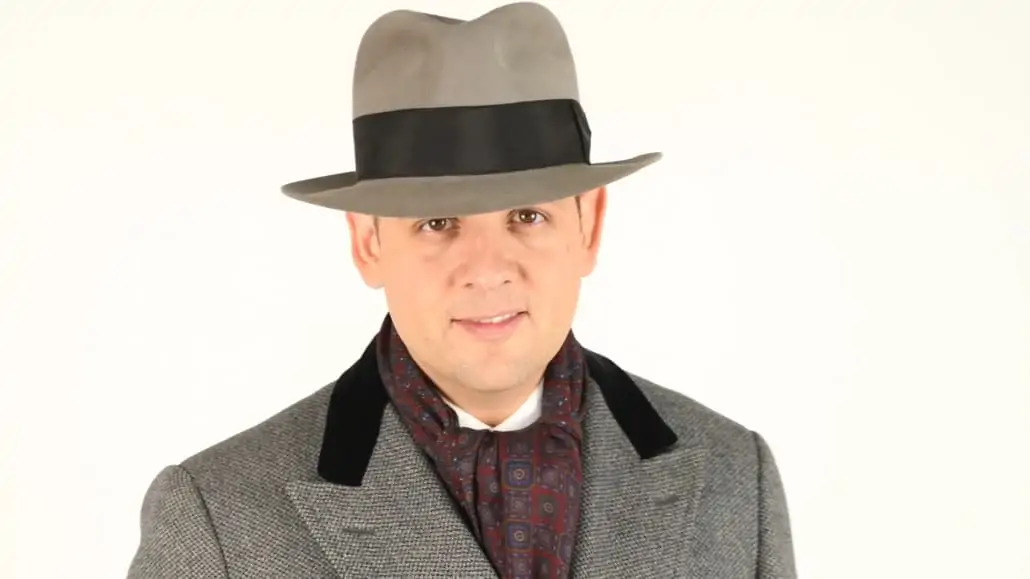
Hair & Facial Hair
In terms of hairstyle and facial hair, a clean-shaven face was still very popular in the 30s. Most men could be seen sporting that baby face look, while older gentlemen often had a mustache.
Actors like Clark Gable, David Niven, and Vincent Price wore thin pencil mustaches well – very defining of that 1930s era. That being said, a wide variety of facial hair did exist at the time.
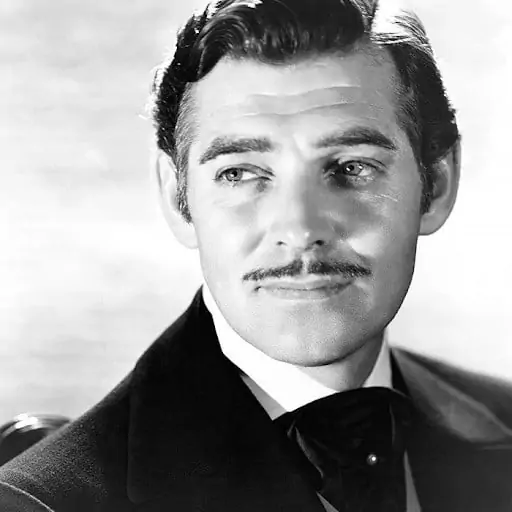
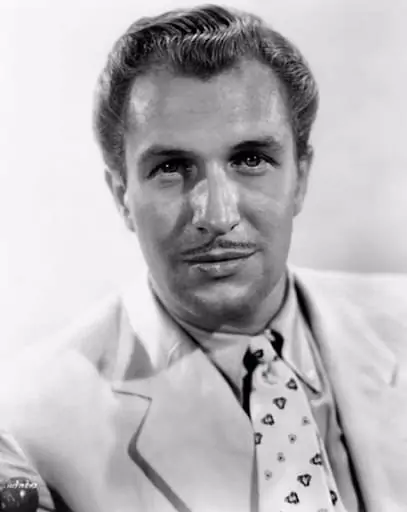
Of course, with more men going hatless, the hairstyles now became more important and changed. Gone were the days of the 1920s where men just brushed back their hair, cut it short, or military style. Men’s hair in the 30s was now typically a bit longer and pomade was used to style it.
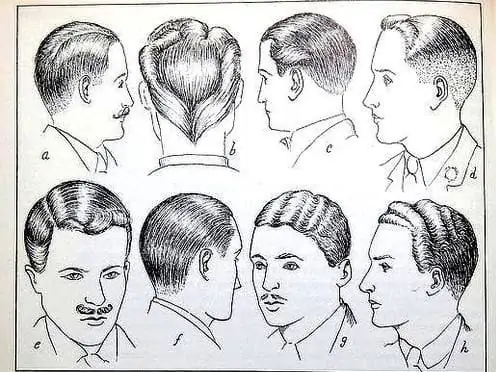
Even though some men permed or curled their hair in a variety of shapes, the side part was probably the most popular hairstyle of the time. Some would even shave the part that way it was even more pronounced. Of course, it also meant that this style was the only thing you could wear for a while. Overall, the hair looked shiny and perfectly waxed. None of those hipster styles!
Eyewear (Spectacles Dominate the Market)
In terms of eyewear, the 30s saw a transition to wider and bigger eyeglasses. In previous decades, you had smaller lenses, now things became bigger and more decorative. The materials had also changed. Yes, you saw the gold-plated and silver wireframes, but you also had celluloid or backlight frames.
Sometimes, the bridges were elevated and no longer set on the nodes, which meant some of the glasses now had little nose pads to keep on your face properly. Imagine that eyeglasses in the 30s were first and foremost used to aid vision, unlike today.
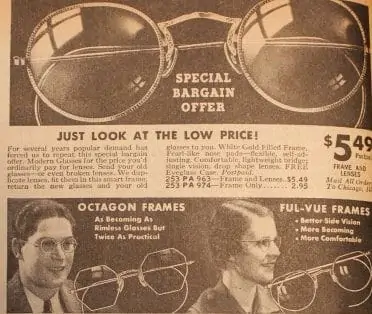
The Pince-nez and monocles were still around but mostly worn by actors or older gentlemen. Even though they tried to make new styles to appeal to our younger generation, that didn’t really work out. Of course, if you were part of the aristocracy, chances are, you are more conservative and you would still wear your monocle. Interestingly, young women also found an interest in them.
Also, sunglasses were increasingly popular and in the US, you definitely had them if you could afford them.
Shirts
In the US, 30s shirts definitely had an attached soft collar and that had become the most popular variety. This made sense because men overall went more casual, of course, for a formal White Tie or Black Tie ensembles, you would still wear these starched detachable collar shirts but for everyday wear, you had the softer ones.
Sometimes, these softer collars were still detachable because it meant you could wash just a collar and not the body or vice versa. While most people today think of detachable collars as white contrasting collars, they would sometimes also sell a number of detachable collars in the same fabric. But today, there are still English legal outfitters who offer this kind of shirt.
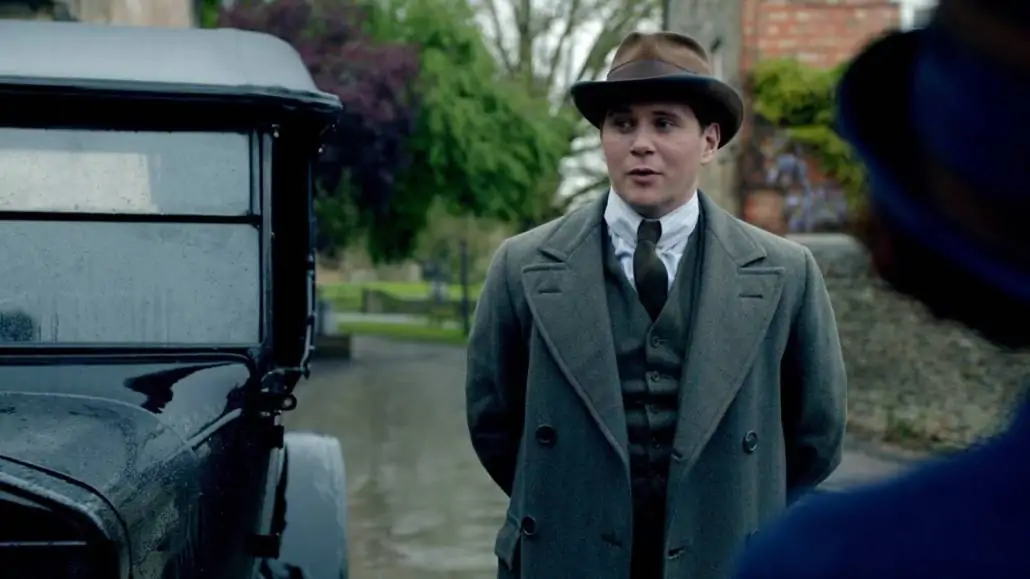
Starched collars were really something that mostly the elites would wear or something for special occasions.
Overall, the collar points became longer and the spear point collar evolved. Those long spears could be held in place with a collar clip which was still popular just like in the 1920s. Some collars also had tabs that had the same effect. If you’re looking for original 1930s style collar clips and pins, check out the Fort Belvedere Shop.
While looking at these shirts today may seem quite elaborate, back then it was a breath of fresh air that was much more casual and young. Why? Well, previous shirts were a lot stiffer, they usually came in white, and now you had darker tones, such as navy or jewel tone, patterns, interesting stripes, and it just allowed for much more creativity.
Probably at no other point in time did you have such a wide but tasteful range of colors and patterns in men’s shirting. Open shirt collars for sports also become more popular. It started in the 20s but in the 30s you definitely see it more, which makes sense because sports like tennis, cricket, or golf had also become more popular.
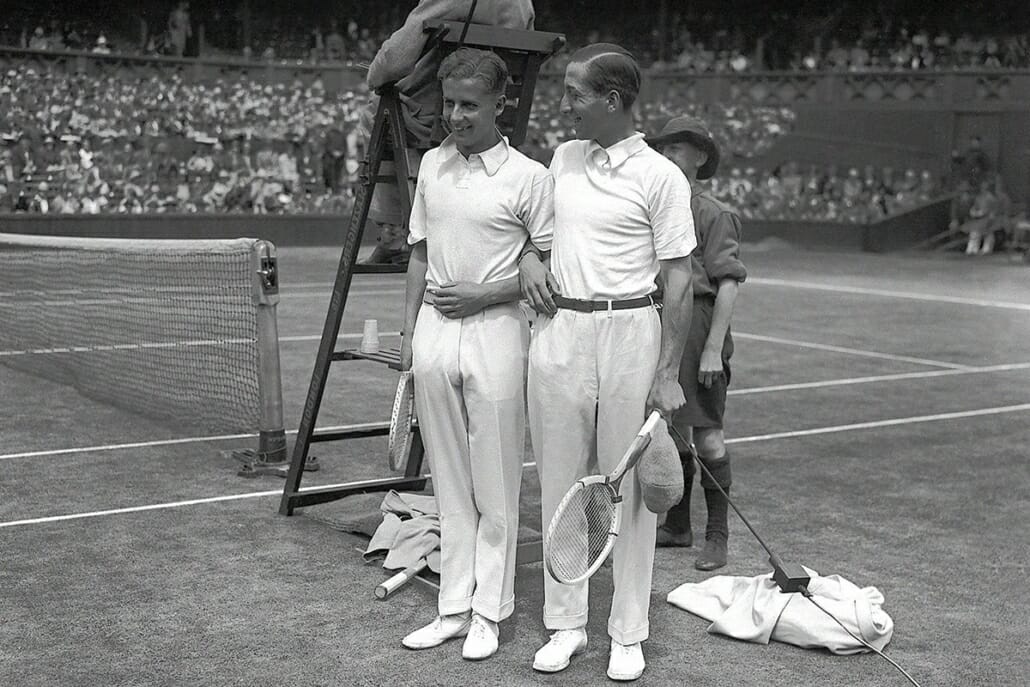
Another big addition to the men’s sporting wardrobe came in 1933 when René Lacoste popularized the polo shirt.
Ties & Bow Ties
During the 30s men still wore ties and bow ties. Ties were much shorter than they are today, they had the diamond shape and they were typically untipped, which means there was no lining unlike in most modern ties today.
What does that mean? Well, the blades were simply hemmed often by machine or unhemmed. The untipped tie makes sense because it’s still elegant but it’s less stiff and it is in line with the casualization of the suit and the outfits of the 1930s.
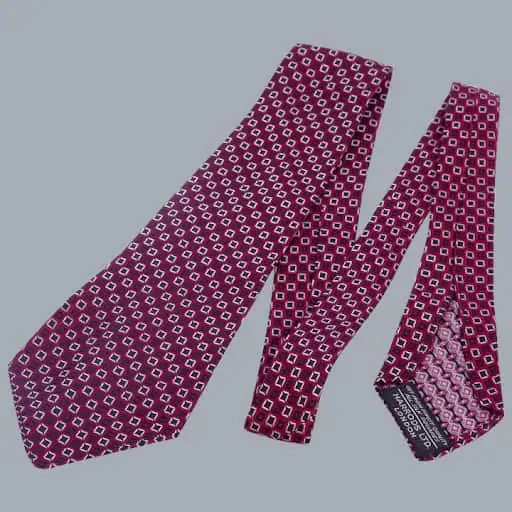
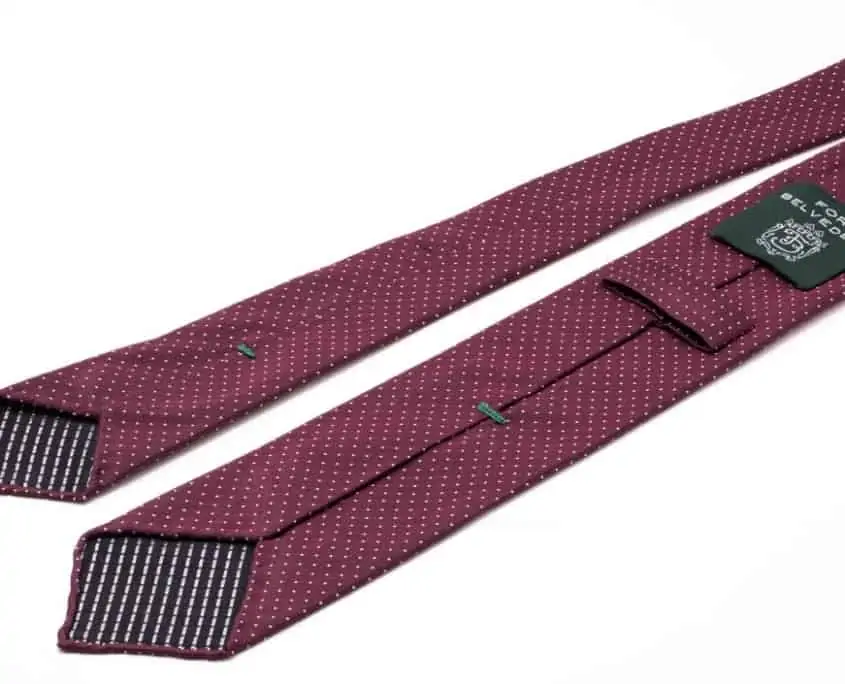
Back then, labor costs were cheap and by having an untipped tie meant you saved money because you didn’t have to pay for the fabric tipping because fabrics were a lot more expensive.
Fast forward to today, things are different. An untipped tie requires hand rolling, for example, and labor is more expensive and fabrics have become less expensive. So, today, typically, the untipped tie is more expensive to produce than the regular tipped tie.
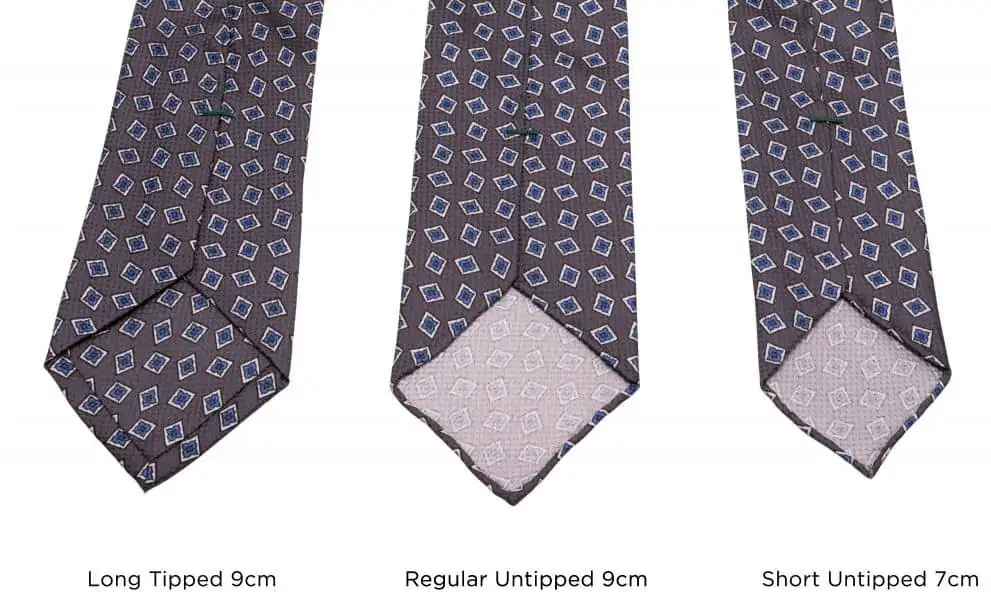
In our shop, we offer untipped ties as well as self-tipped ties from Fort Belvedere in three different lengths so if you want that 30s look you can get an untipped tie that is a little shorter because that is really essential for that vintage feel.
Bow ties at the time also had very thin or no interlining and so the bow just tied a little differently than most modern bow ties. For casual excursions, you could actually see men go out and about without neckwear which was highly unlikely in previous decades. Someone in the 30s didn’t want to go without anything so they wore ascots and they were somewhat popular.
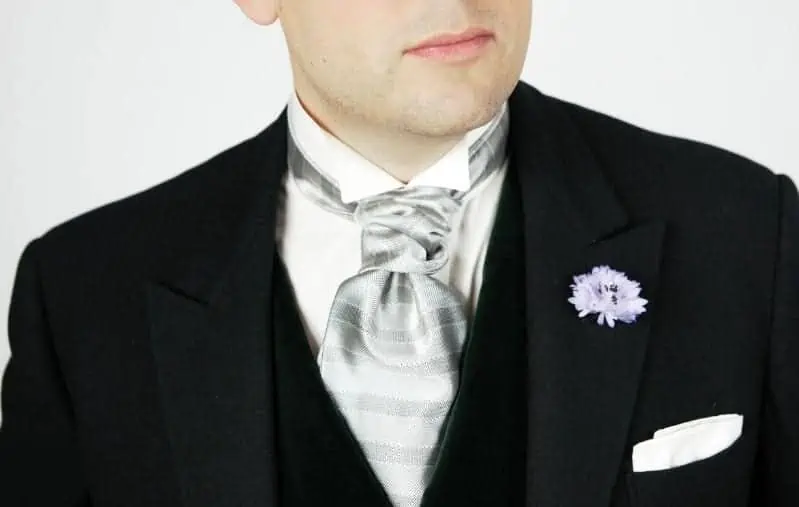
Of course, you guessed it, we also got ascots in our shop; the formal ones, as well as the casual ones that were popular in the 30s.
Vests & Waistcoats
In terms of vests and waistcoats, they were no longer mandatory during the 1930s. Central heating was advancing and popping up in more and more office buildings. Double-breasted suits were popular so you could skip it there and it was just a new, fresher, less stiff look.
However, the men who did still wear waistcoats and vests wanted a slightly different shape. The tips became longer and you could now see decorative buttons and buttonholes that were never meant to be buttoned but were just there for the looks. In any case, you always wanted the tips of your waistcoat to cover your waistband so no tie or shirt would ever poke out.
If you look closely at the bottom, you would see what some people call the shark-tooth shape, where you can’t button the button.
In terms of pockets, vests typically featured four; a chest pocket on either side and a pocket below that. Even though men still wore pocket watches, the extra buttonhole that was just there for the T-bar of the other chain had mostly disappeared by the 1930s.
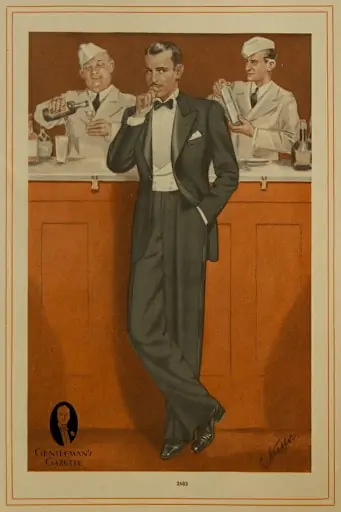
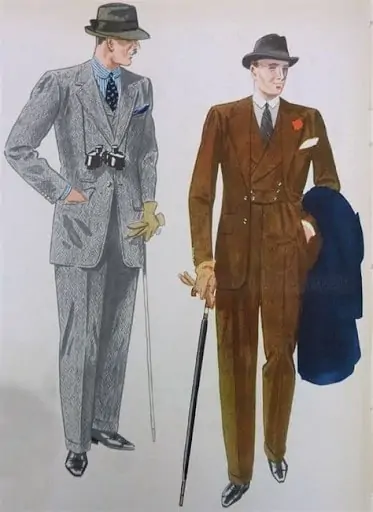
Compared to 1920s waistcoats, the neckline had increased by about an inch. Double-breasted waistcoats were also popular during the 30s and they had a different style – they were cut shorter which made sense because pants had a high rise because remember they still had to cover the waistband. On top, the V was a lot deeper and it typically had lapels.
Personally, I’m a big fan of double-breasted waistcoats, not just for morning wear and gray, but overall. Why? They have nice peaked lapels, and it’s just a detail that you can’t really find today anymore.
Jackets (A Shift Toward Athletic Cuts)
The lounge suit was still extremely popular with the average Joe. The button stance on the 30s jacket was slightly lower and it was overall slightly shorter in the back. The buttoning point in the 30s was lower than in the 20s and closer to your natural waist. Often, that meant that the bottom button of a single-breasted jacket or double-breasted jacket was in line with the top line of the pockets.
Of course, only the pockets weren’t angled which by the way wasn’t seen very frequently. Pockets were typically pretty straight.
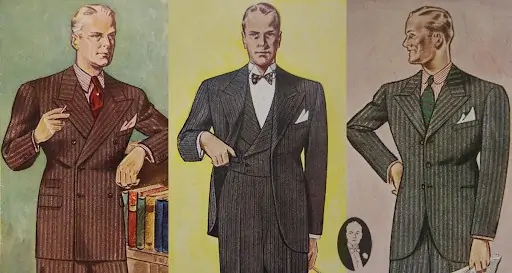
The 30s jacket still had a certain amount of waist suppression but it wasn’t as extreme as in the 20s. Also, in the 20s, you still had that body coat style, in the 30s you had more of a drape style which meant the jacket was cut fuller and there was excess material over your shoulder blade in the back and your chest in the front.
The shoulders were also wider and roomier and overall the jacket set looser on the body, but the fabrics they used were still heavy so everything draped really nicely. Also, off-the-rack jackets still came in a much broader variety of back variations with belts and shooting pleats compared to today.

Personally, I like action-backs and shooting pleats–the whole nine yards. These features weren’t just purely aesthetic but also allowed you to move more freely and it made the suit and a jacket more practical. While the suit was still popular, the idea of a contrasting sports jacket also picked up steam in their 30s.
So, why did fashions change?
Why did we have sport coat combinations and a jacket that was much roomier and bigger when just 10 years earlier, jackets were a lot tighter and tailored to the body? Well, previously fashions were mostly dictated by the elites or monarchs. Those people generally didn’t have to do hard physical labor so they didn’t have strong muscles, but they were lean and trim for the most part.
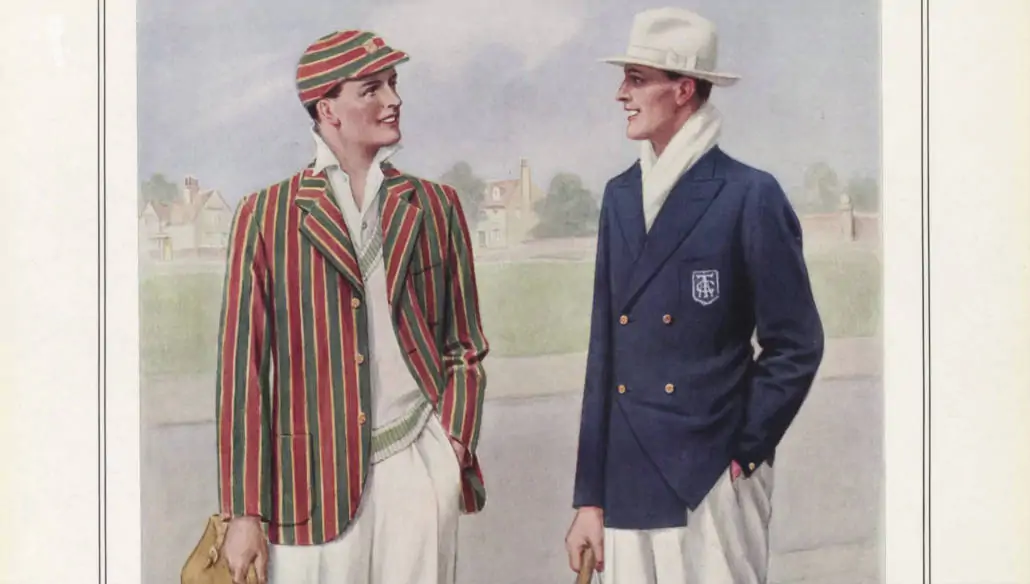
The 1930s saw a huge shift in this culture. People were more interested in sports, they followed sports more and so that ideal of the muscular sportsmen was much more desirable and so the suit jacket was built up to make your stature more imposing.
At the same time, with a jacket with firmer and broader shoulders, you needed wider lapels to compensate for the overall look and then, you added a pair of more casual pants to the mix. The more relaxed sport jackets called for a more relaxed version of slacks.
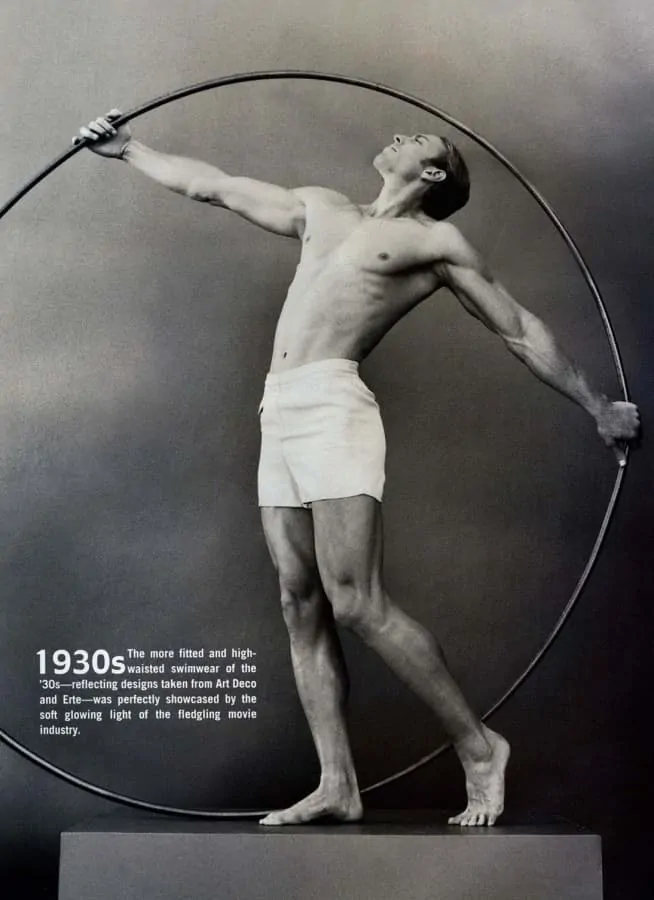
Of course, men in the 30s also watched movies, so when Clark Gable skipped the undershirt in It Happened One Night in 1934, apparently, the undershirt sales plummeted. Overall, the focus of men’s fashion had shifted away from the aristocracy and the elites towards Joe average.
While the average person today would look at the 30s suit as being very conservative and formal, back then it was casual, soft and new. That meant you had a range of different colors for suits and also different patterns – checks, Glen plaids, and herringbones were really popular.
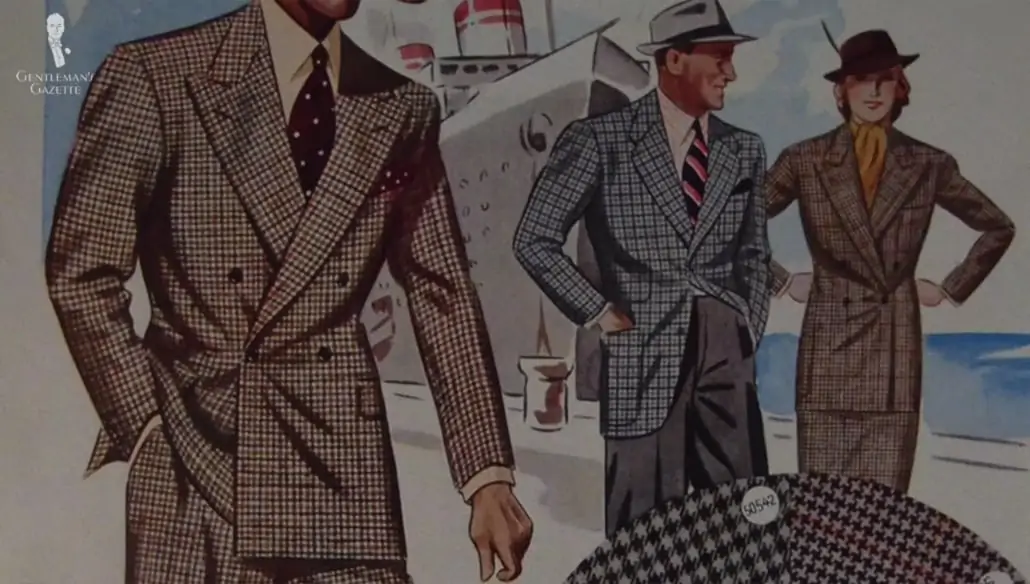
Colors like brown, navy, charcoal were definitely something that men would wear. But you also had nice earth tones like beige or cream or camel as full suits. Today, typically you only see them as sport coats or pants not so much as a suit.
Normally, suits were made of wool or tweed but the sharkskin weave also became popular in the 1930s. Single-breasted jackets typically were two-button or three-button and sometimes a three roll two. Two-button jackets were typically buttoned on the top one, three-button jackets on the middle one.
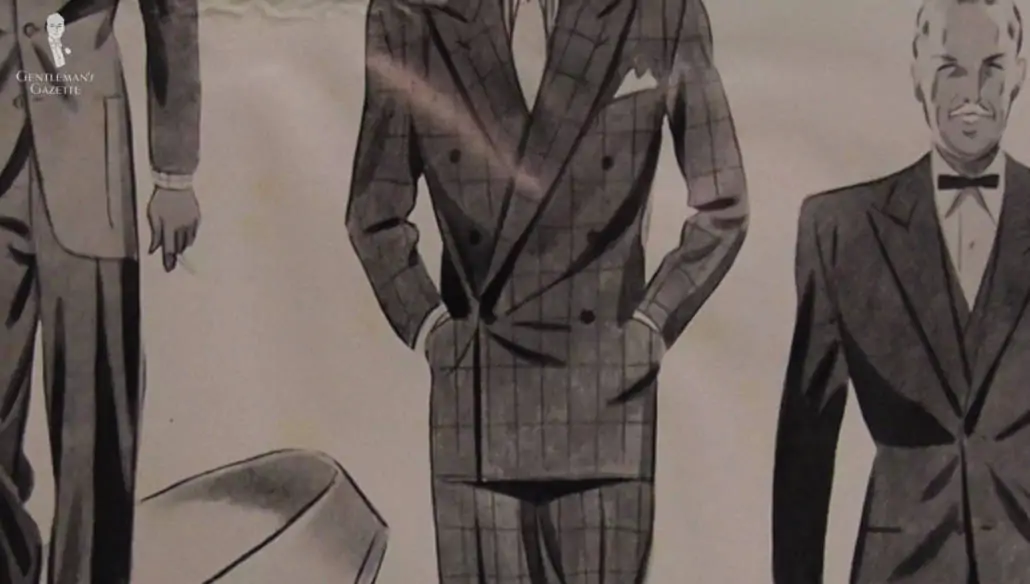
The 30s are also famed for their double-breasted jackets. With wide peaked lapels and a six buttons. 6×2 double-breasted jackets or 6x1s were popular. That meant, you only button one or two buttons on the jacket, the top row was merely decorative. Also, the overlap of the fabric was quite a bit wider than in the previous decades.
In the 1920s were really slim, the 30s were really wide and most double-breasted jackets today are somewhere in between those decades. The cuff buttons on your sleeves became much more modern, in a sense that buttons often touched and you had three or four buttons with not much spacing in between.
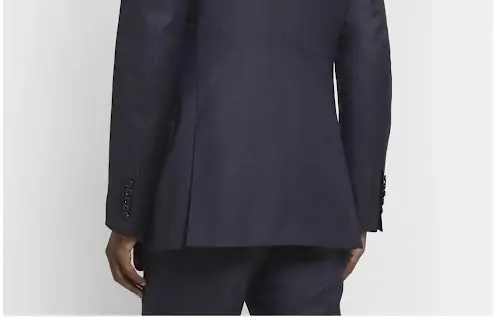
While the 30s saw a popularization of double-vented jackets, most jackets still had no vents for a cleaner silhouette. That being said, you could also find center vents. The elites in Hollywood and elsewhere probably had favored the side vents because it was a new thing. If there was only one defining feature for a 1930s men’s jacket, it was the wide lapels.
For double-breasted ones, they were wide, they were pointed and the gorge was much lower than what you would typically see today. The gorge was also low for single-breasted jackets which meant the lapel appeared over a little shorter but because it was wider it was still quite prominent.
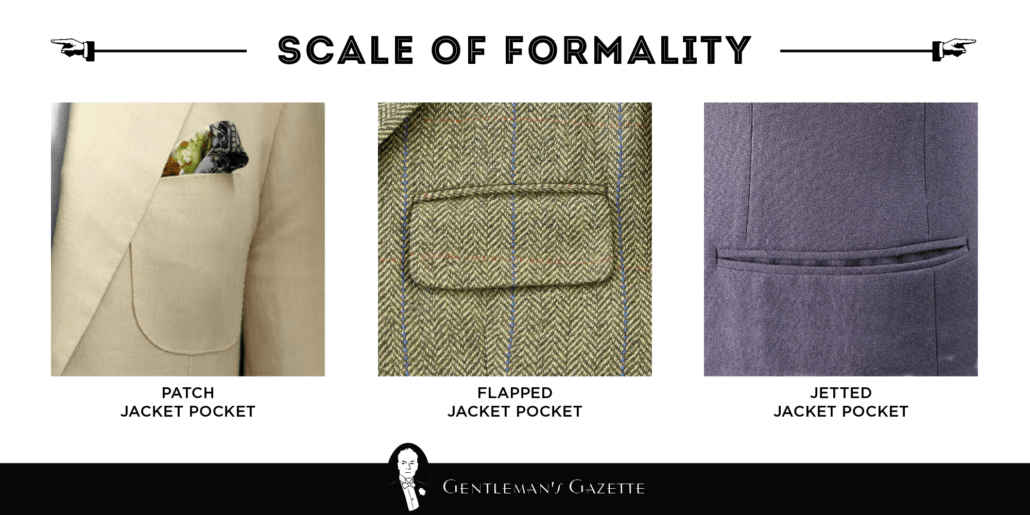
In terms of pockets, you had jetted pockets for more formal ones, you had flap pockets but you also had the patch pocket, especially on a casual suit like Clark Gable in It Happened One Night.
Trousers
While pleats in trousers were not a thing in the 1910s, by 1930 you could find pants with many pleats – not just one but two or sometimes more. That meant on average about 10-inch or 25-centimeter pant hem openings which are quite wide. Because of all that fabric, they were commonly finished with turn-ups or cuffs as the Americans would say.
Oxford bags as introduced in the 1920s were still around but they weren’t as wide anymore. In Europe, many men would still be wearing suspenders with a fishtail back and buttons but in the US, men really preferred trousers or pants that were cut for wearing with a belt. As such, they had a flat waistband without the fishtail.
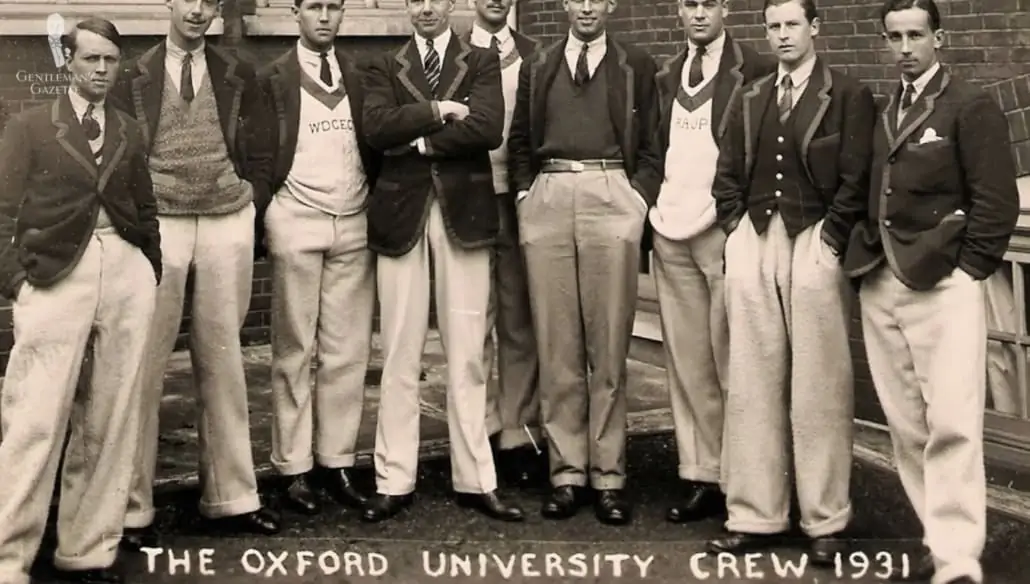
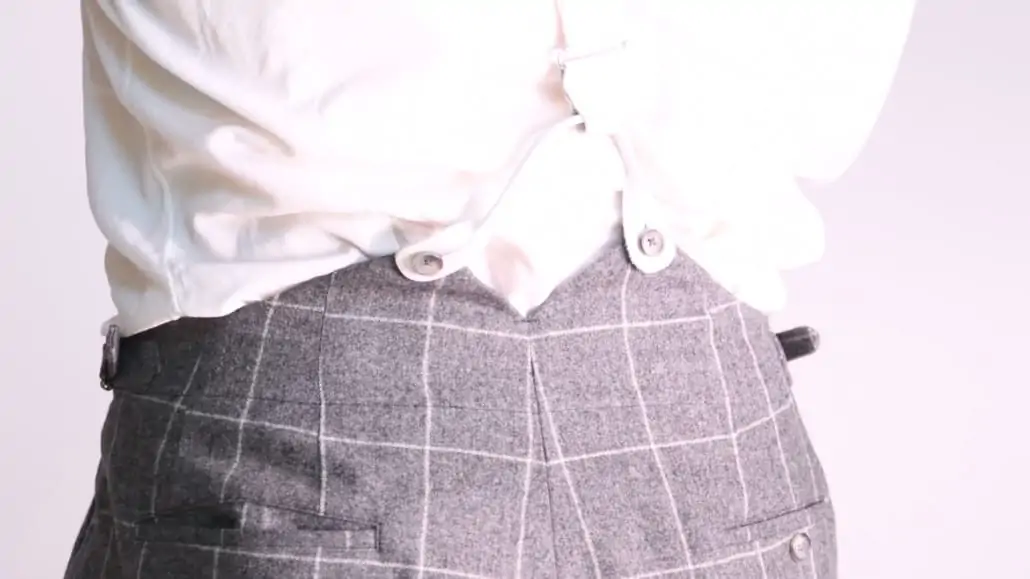
Previously, the buttons for suspenders have been placed on the outside. Now, they move to the inside, in case you ever wanted to switch to wearing the pants with a belt. One popular trend of 1930s, American slacks was a so-called “Hollywood waistband.” Typically, most trousers have a separate waistband but in the 30s that separate waistband disappeared and the fabric just went all the way up.
Because belts were popular, you had attached belt loops from the outside (sometimes called “drop loops”), and was a very special look. A little more obscure and definitely less popular invention of the 30s was the “Cuban waistband,” which had rows of buttons.
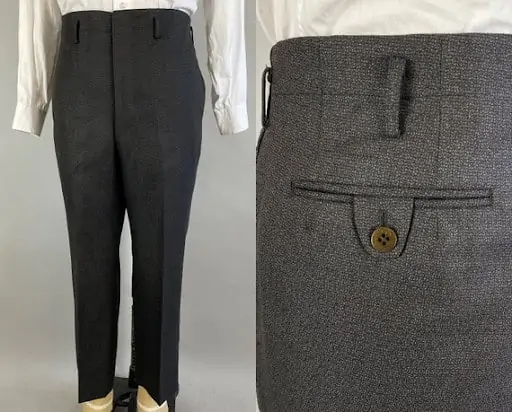
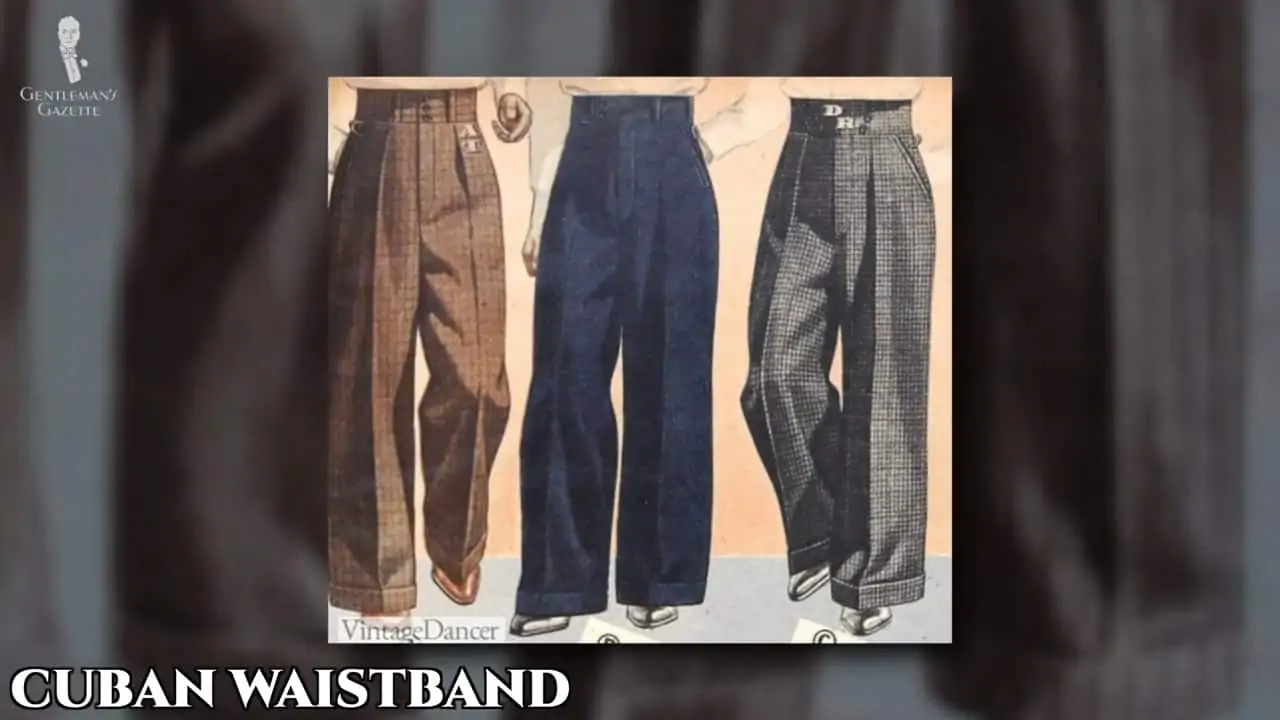
One thing that really changed in 1930s in men’s trousers was the popularization of the zipper. Previously, men had buttons for their suspenders and buttons on their fly. It didn’t matter if they were dress trousers or Levi’s jeans, but now the zipper was widely being implemented into men’s trousers, especially in the US.
Levi’s Jeans
Apparently, in the late 20s, men started cutting off these cinch belts in the back, so they could wear their jeans with a belt. In response to this, in 1933 Levi’s offered a service that would cut off that cinch belt when you bought your pair of pants at the store. Remember, back then jeans were still workwear but most had at least a pair for maybe some yard work or when they went working on the car.
By 1937, Levi’s stopped producing jeans with buttons on them but offered them as an aftermarket option. That vanished soon along with a cinch belt altogether. Overall the 1930s really brought big changes to men’s pants.
Knickerbockers
Also, you had knickerbockers or plus-fours which were quite popular. Plus fours are technically knickerbockers that hang four inches below your knee, hence the name plus fours. Sometimes, you can also find plus-twos which means they just hang two inches below your knee, others preferred plus-sixes or plus-eights, and so on.
So, why did they become so popular? Well, it was the Duke of Windsor at the time probably the most photographed man in the world who loved wearing them so people saw it and he was a style icon. Typically, you could wear them during sporting activities, but they could also be worn during just more casual everyday activities.
Shoes
By the 1930s, men’s boots had started to wane in terms of fashion, and regular dress shoes were much more popular. Shoes like Oxfords or Derbies and cap toes or full brogues were quite popular typically in colors of brown, dark tan, black but also white. This was the time men were white buck dress shoes and you can still find them today and I certainly like them.
Also, while everyone wore them, you could still find a lot more spectator or two-tone shoes than you can find today.
Accessories
Men still wore them in the 1930s, but overall, they rejected excess accessories. This means there were no more stiff collars, also walking canes that were previously used for decorative purposes started to just disappear. Likewise, people stopped wearing spats and even evening dress gloves disappeared.
On the other hand, cigarette lighters, tobacco boxes, and anything related to smoking became more popular.
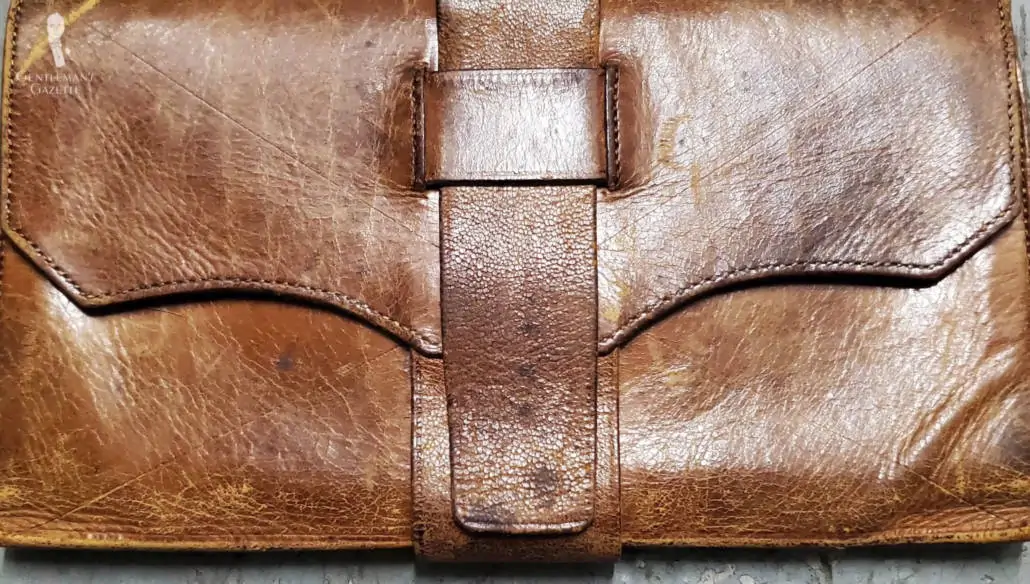
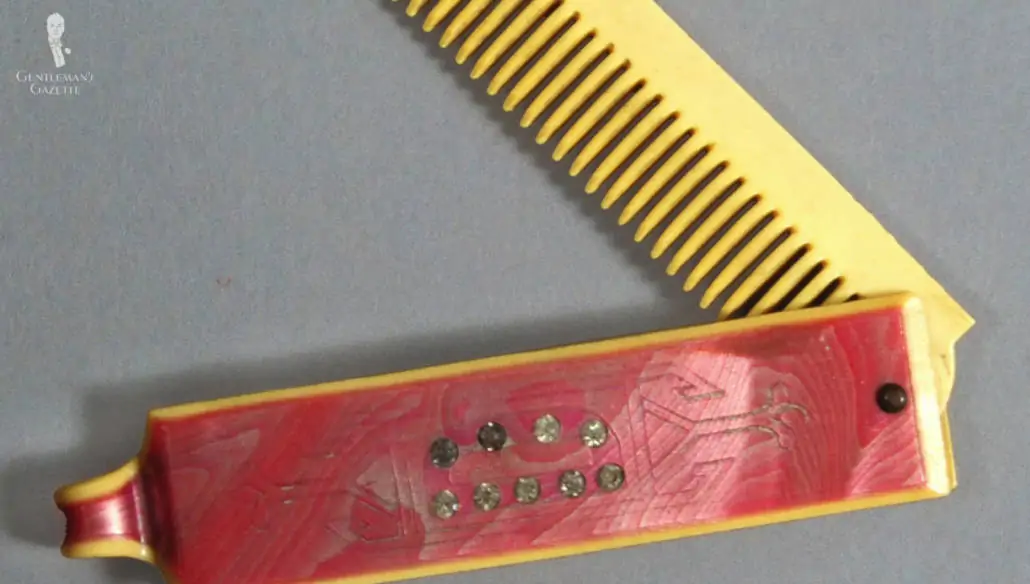
Men also typically had a wallet and sometimes also a comb remember they had these sleek hairstyles that were still wearing hats, so you really needed one. That’s how they came up with these cool little pocket combs that you could just flip open.
Men still wore cufflinks but the button barrel cuff definitely became more popular. In terms of watches, wristwatches were now more popular than the pocket watches of the previous generations.
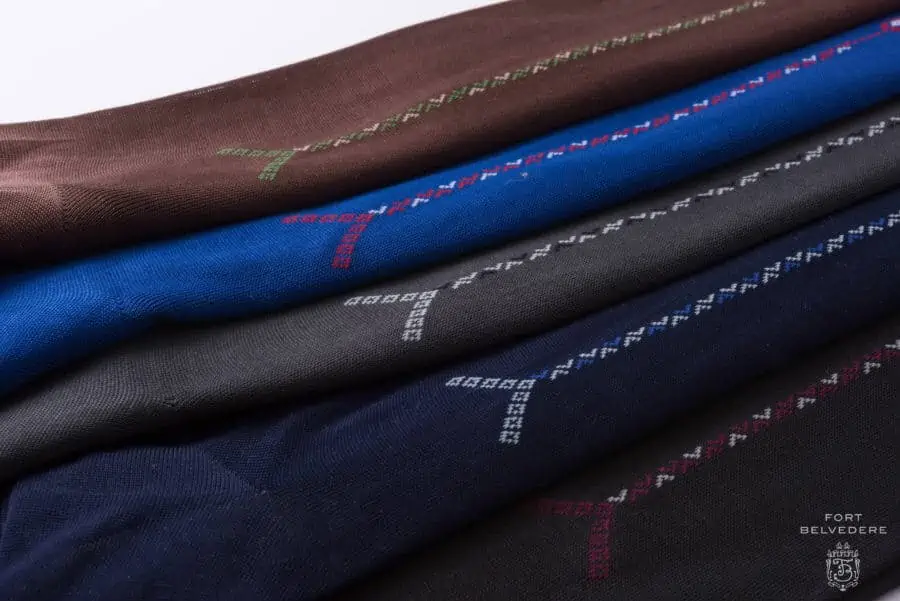
Men did still wear ties and hats and bow ties or ascots as well as over-the-calf socks, or if they had shorter socks, they had sock suspenders. Stylistically, you’d oftentimes see solids stripes or patterns in the socks, herringbones, or the ones that I really like from that period, the socks with clocks on the side.
To learn more about how you wear socks with clocks and other socks for that matter, we have an in-depth guide for you, but we’ll also sell these typically 30s inspired socks with clocks in our shop here.
Outfit Rundown
I’m wearing a 30s-inspired outfit consisting of an authentic 30s suit. I think it’s late 30s. It has a low gorge, wide lapels, kind of a bright-ish brown color with a herringbone pattern.
The buttonholes are all handmade. It’s a three-roll-two jacket, button on the center button. And it has three patch pockets just like Clark Gable in “It Happened One Night.” You can see the quarters are cut a little more open in the front. The fabric is heavier and drapes well. There’s definitely a stiffer shoulder interlining and it gives me that broader look in the chest.
The pants are, of course, pleated. They’re relatively high rise, although not as high as, maybe, some pants from 1910s. They’re cut full and straight, which is advantageous for my big thighs. They also feature cuffs that aren’t too long and just have a slight break.
For my shirt, I chose a light blue, soft cotton, brushed twill shirt. And I chose a bow tie in a navy with kind of an oaker yellow, big, bold polka dot. The bow tie is not originally from the 30s. But, it has no interlining and is stylistically kind of a classic butterfly shape, which is what you would have found back then.
Men also wore pocket squares back then, so I have this kind of scarab pattern pocket square in blue and green, which picks up the color of the clocks in my brown socks, which are green and white, as well as the color of my cufflinks, which are green and white. The blues go well with my little blue boutonniere, which was a fun accessory that was popular with men.
And my Fedora hat is not the original 30s. But, it has a wider brim, it’s really soft, and it has an original white 1930s headband. My cufflinks are double-sided and closely enameled, which was something popular during the 1930s. My ring is gold with a tiger side that picks up the brown tones of the suit and, of course, it also works with my two-tone brown and off-white spectator shoes.
They’re modern ones from Allen Edmonds. I don’t think you can find them today. The style was called “Bel-Air.” Of course, these are trousers with a belt. They’re not Hollywood waist, but I do have that style as well.
For my shoelaces, I went with some from Fort Belvedere, which matched the color of the white leather and it just ties the entire outfit together. In our shop, we offer over 40 colors of boot laces, round cotton waxed laces, and flat cotton shoelaces, which are unusual but can look really cool.
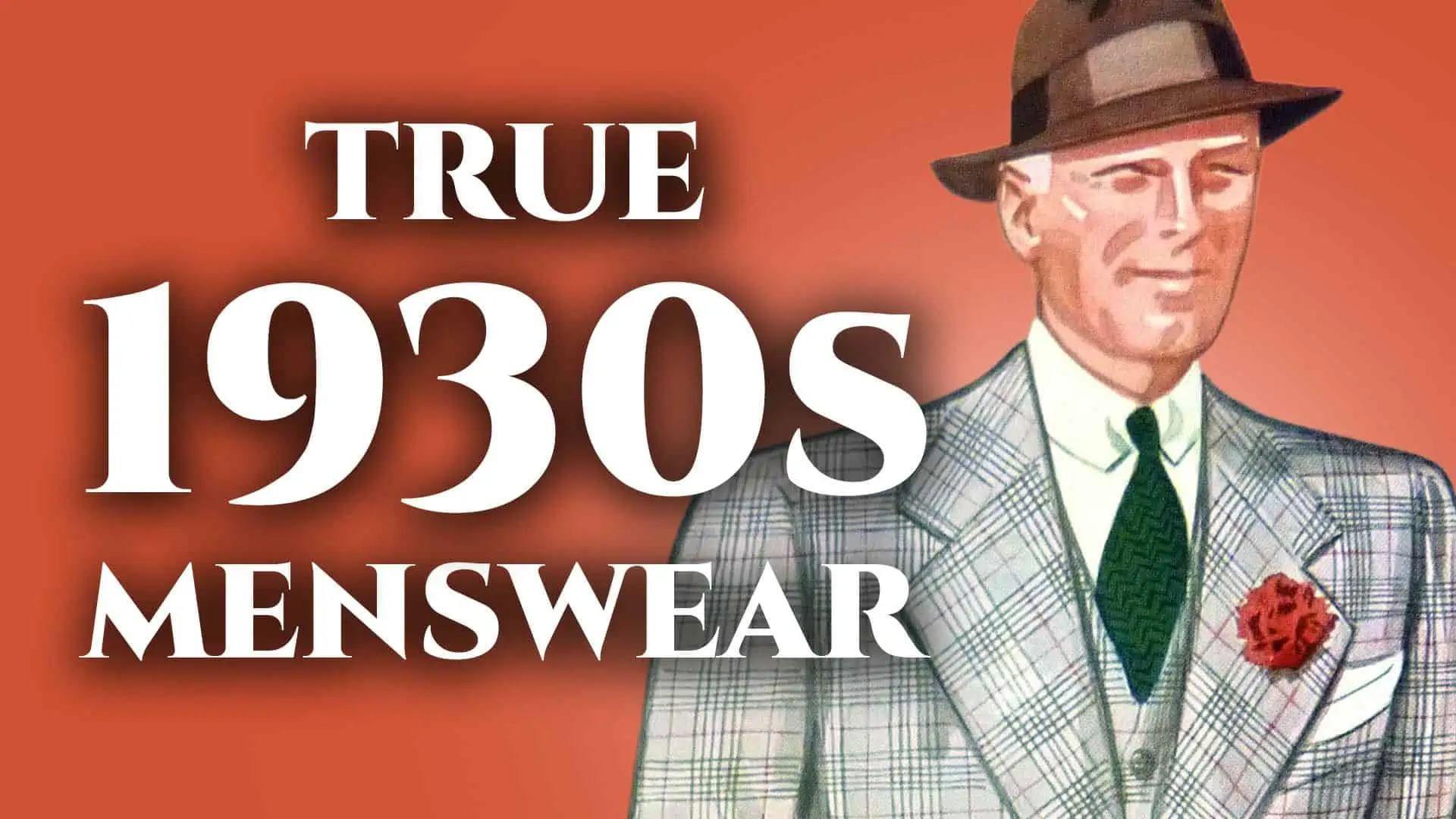
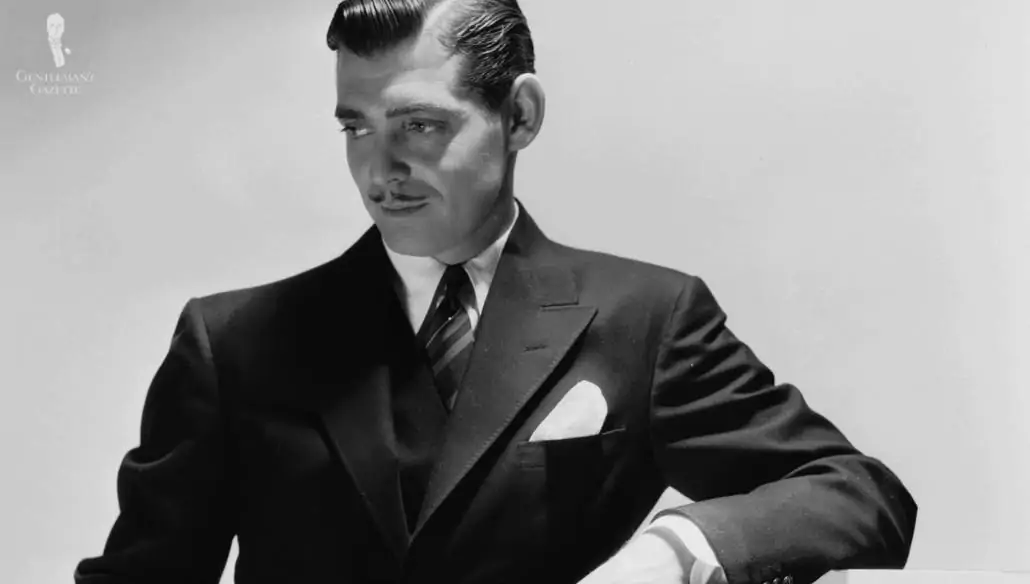
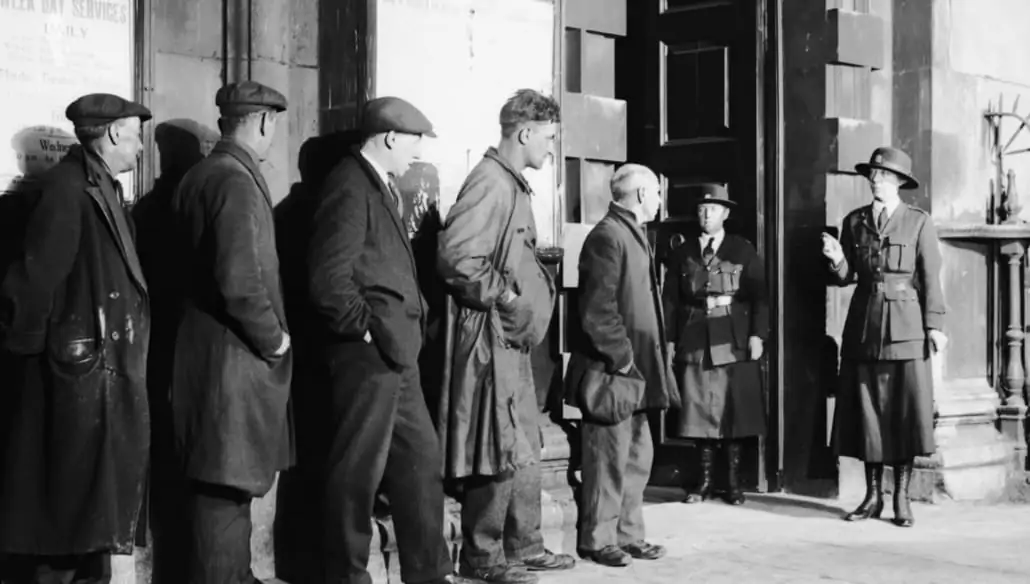
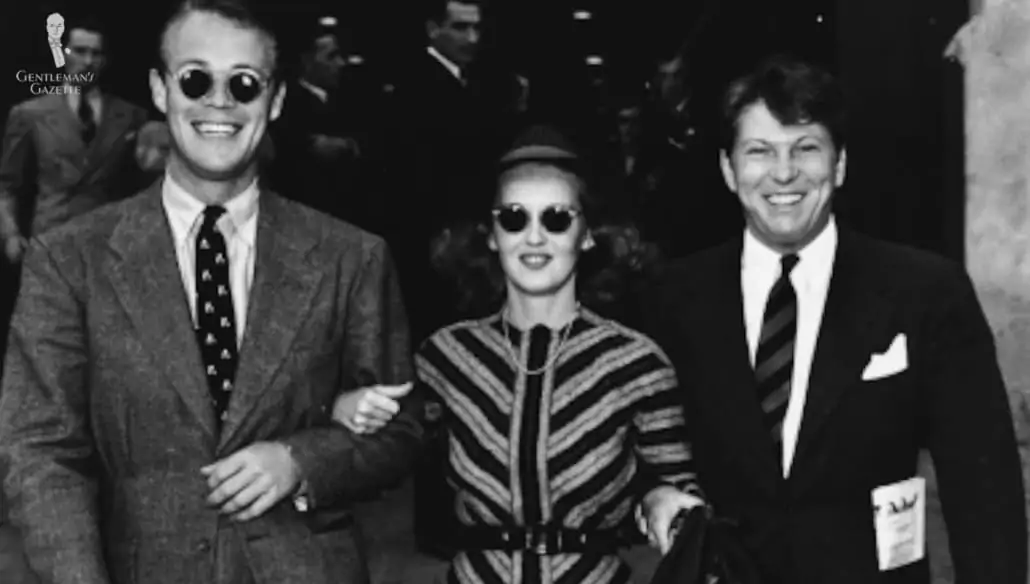
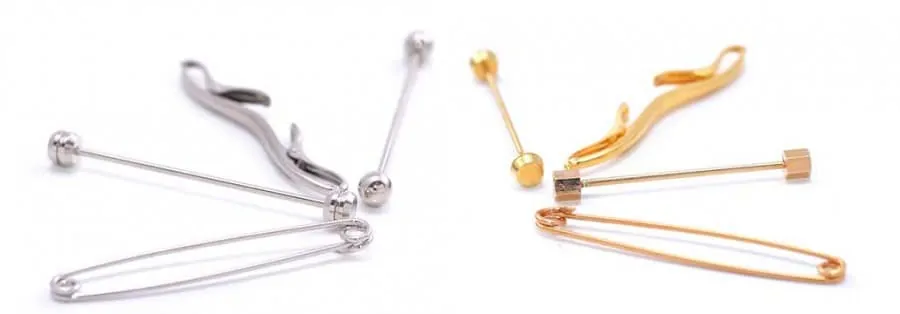
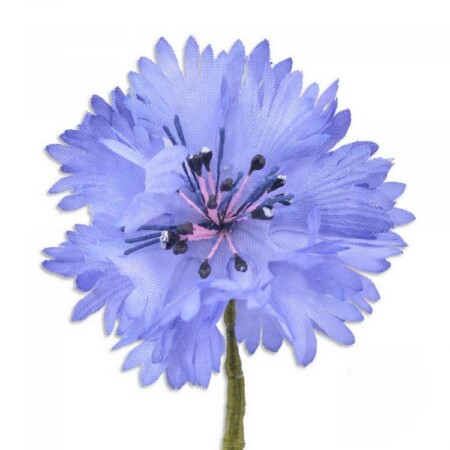
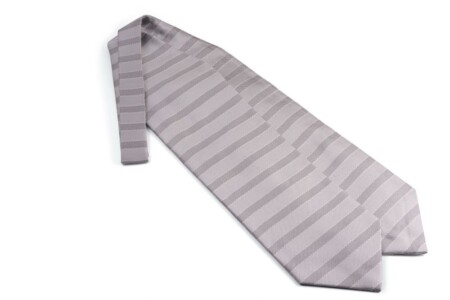
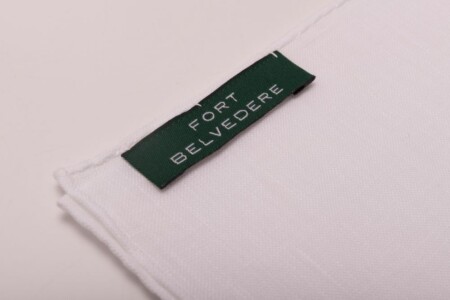
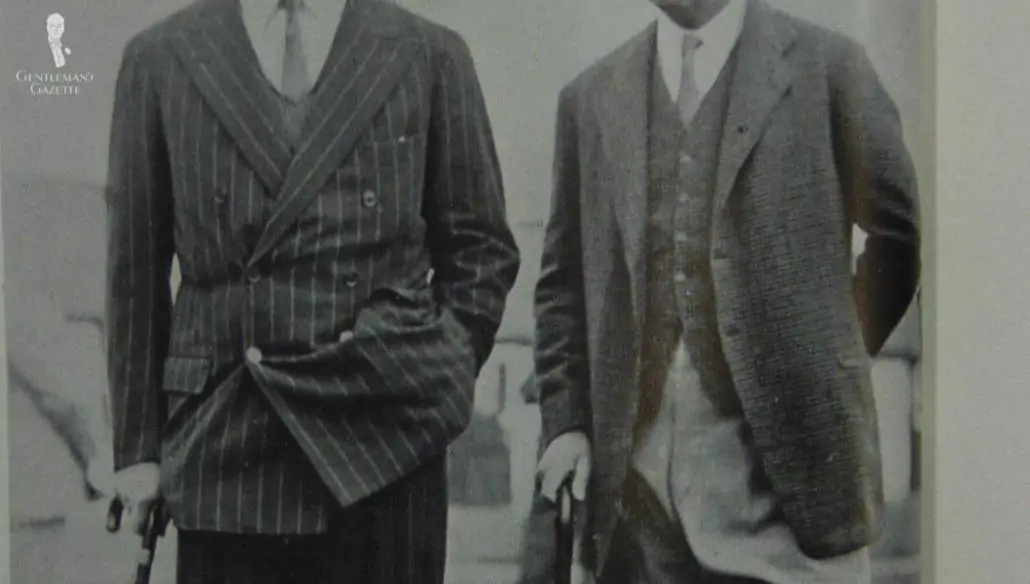
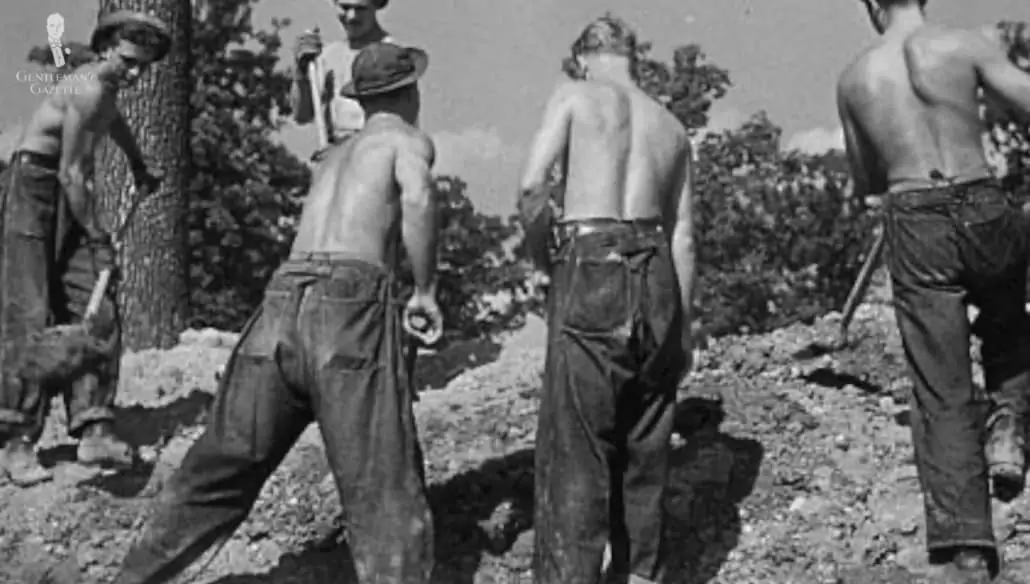
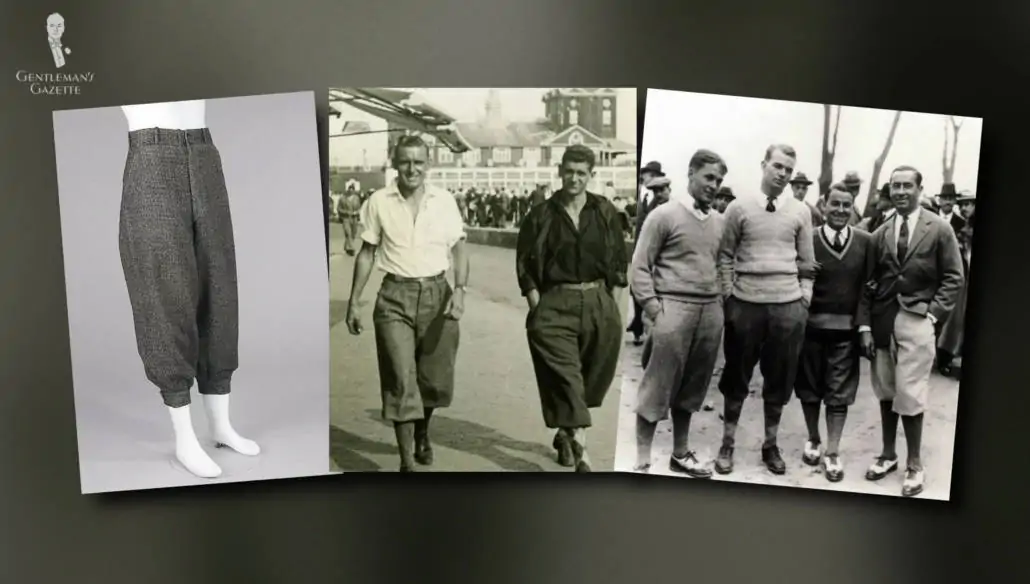
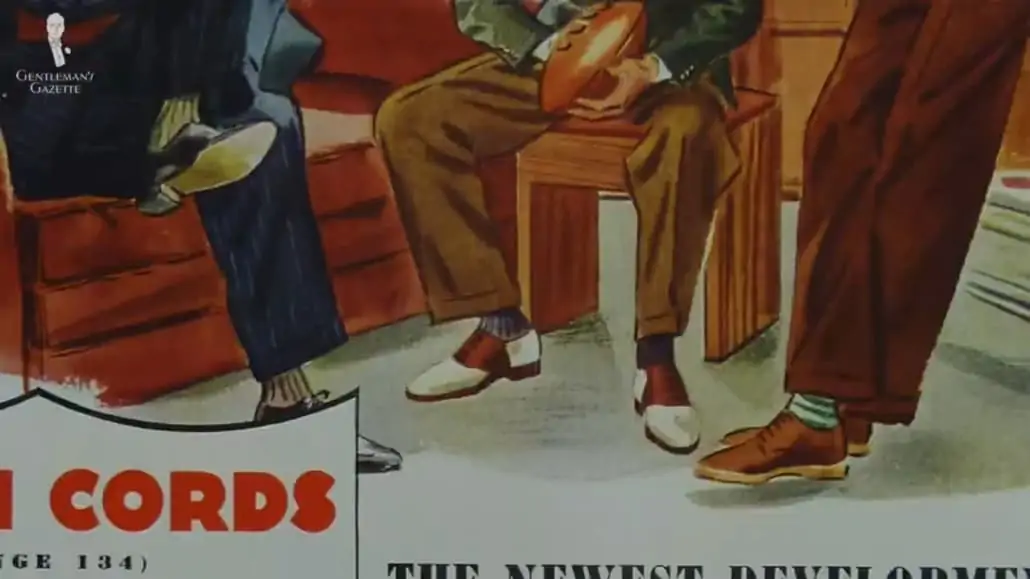
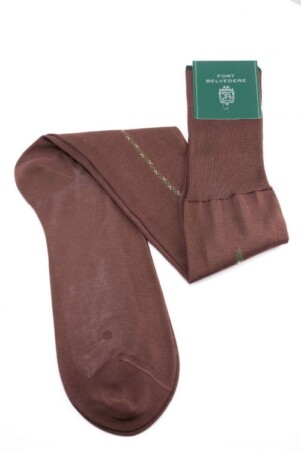
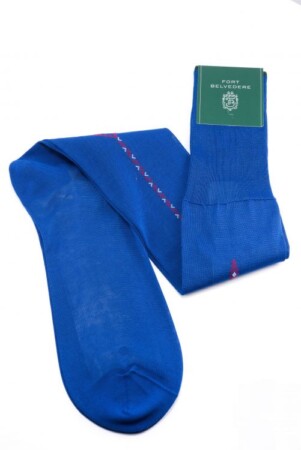
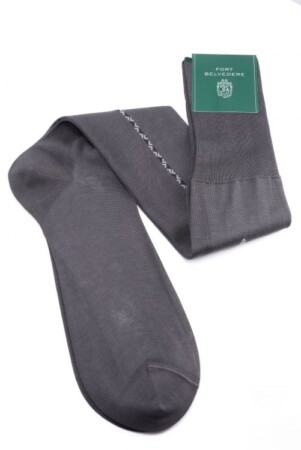
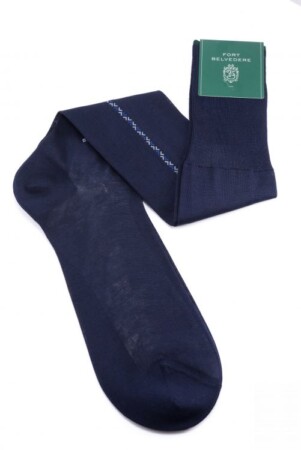
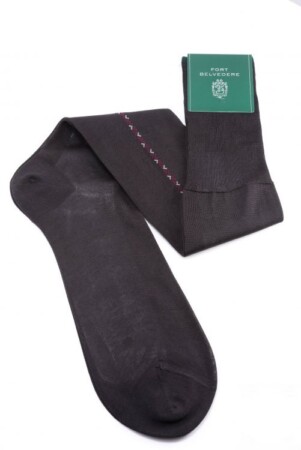
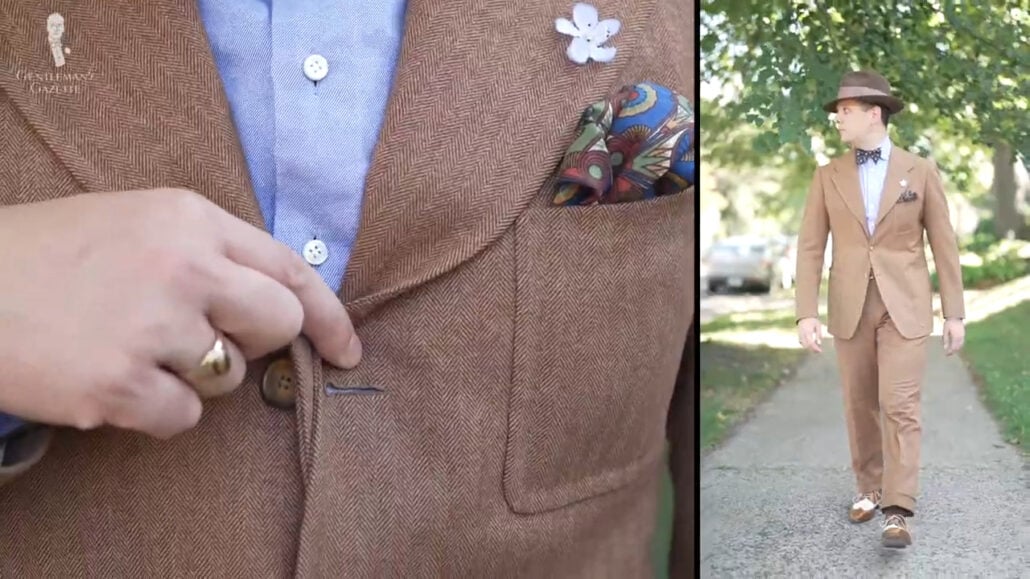
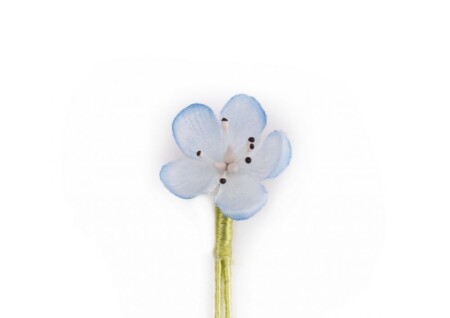
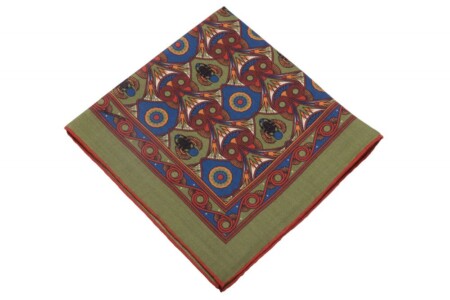
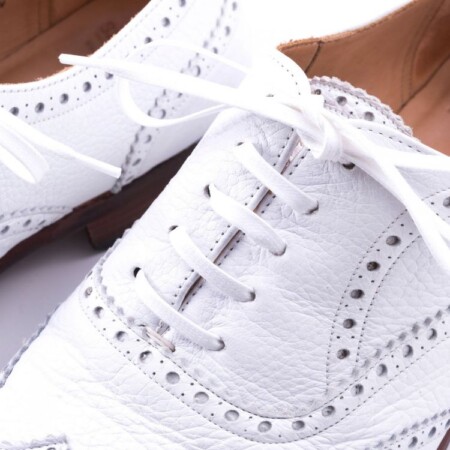
Greetings,
This article’s title was misleading.
With The United States and Europe mired in dire economic straits, only men of means could dress fashionably.
Ordinary men “REALLY” wore old clothes until they were threadbare. Sock holes were darned, cardboard was placed inside shoes to cover the holes in soles, shirt cuffs and collars were “turned” to disguise frayed surfaces, and interior patches covered worn knees and elbows.
Even U.S. President Franklin Roosevelt wore his dress shirts until they were falling apart. Eleanor Roosevelt noted, “Franklin, you must find some respectable shirts!”
When my dad was growing up in Spokane, Washington during the Great Depression, he sold copies of the daily “Spokesman Review” along the commercial streets. When I became interested in men’s clothing, he shared his memories of gazing longingly into the shops with all the beautiful garments and furnishings in the windows. Forty-five years later, when I was a first-year student at Spokane’s Gonzaga University, I went to the downtown shopping district and bought my dad a necktie at one of the menswear shops that was open since his childhood. When he saw the store’s logo emblazoned on the gift box, I saw recollections of 1935 in his eyes.
In the 1930’s, regular fellas in the United States struggled to be clad adequately to hang onto whatever job they had, or appear respectable enough to look for employment.
Also, 60% of American men were engaged in agricultural pursuits during the Great Depression, so knickers and paletot overcoats were not wardrobe necessities.
With every best wish,
Andrew Gregg,
Palm Springs, California.
Thanks Andrew, your comment is very historic and so spot on to me.
Loved the gift. My friend’s father had a high school education and was a milkman, when she got a PhD from Harvard, her dad said could you get me one thing? One of those black wooden chairs with the Harvard gold seal on the shoulder piece. How could she say “no”?